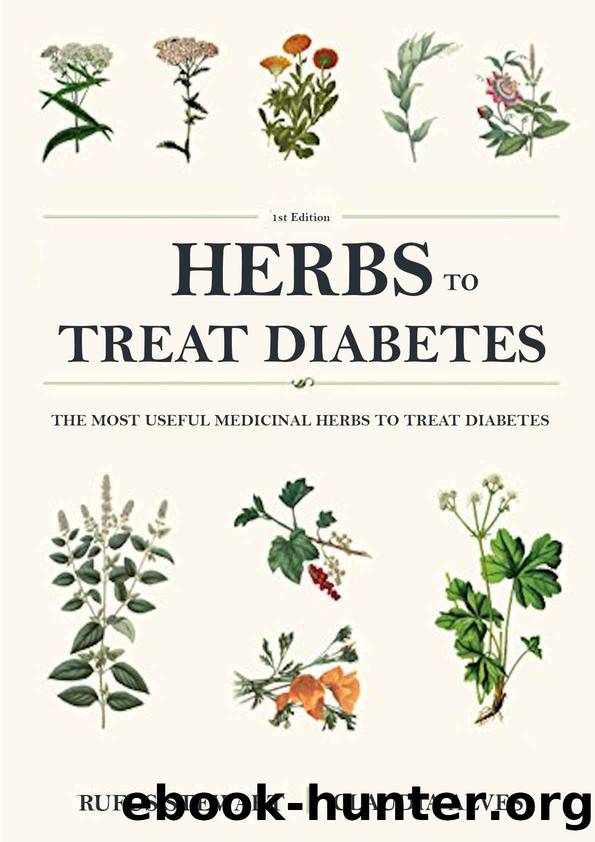Herbs to treat diabetes: The most useful medicinal herbs to treat diabetes by Rufus Stewart & Claudia Alves

Author:Rufus Stewart & Claudia Alves [Stewart, Rufus & Alves, Claudia]
Language: eng
Format: epub
Published: 2021-01-02T18:30:00+00:00
Inflammation of the spleen, loose stools.
Application form
⢠Decoction of Remania roots. A single dose is a decoction of 5â20 g of raw materials.
Agrimony medicinal (hairy)
Agrimonia pilosa L
Based on the data of traditional medicine, the attention of scientists from the Siberian Medical University was attracted by the hairy agrimony of the Rosaceae family , as well as a number of plants of the Asteraceae and Urticaceae families , which have a wide raw material base. E. A. Krasnov, M. G. Vinokurova, V. V. Dudko et al. (2006) developed an optimal technology for obtaining aqueous and aqueous-alcoholic dry polyextracts collection. Studies on the content of biologically active substances using qualitative reactions and chromatographic methods (BC, TLC) showed the presence of a significant amount of polysaccharides (inulin), flavonoids, phenol carboxylic acids (caffeic, ferulic), saponins and tannins (5.1 ± 0.48 %) ...
The hypoglycemic activity of the obtained extracts was assessed on the models of adrenaline hyperglycemia and alloxan diabetes, and the dynamics of the body's sensitivity to the biological effect of insulin against the background of the introduction of the extracts was investigated using the "insulin resistance" test. The antidiabetic collection "Arfazetin" was used as a reference drug. It was revealed that the studied extracts, depending on the dose and mode of administration (single and course), reduce the severity of hyperglycemia with the introduction of adrenaline, and in alloxan diabetes, they demonstrate a distinct hypoglycemic effect.
The most active was the water-ethanol extract, lowering the glucose level by 48.11â53.6 %, significantly exceeding the reference drug (10.03â12.05 %). The chemical composition of the agape genus is represented by various groups of compounds: flavonoids (quercetin and its glycosides, as well as 7-glucosides of luteolin and apigenin), polysaccharides, phenol carboxylic acids (caffeic, chlorogenic, ellagic), coumarins and tannins. In the course of pharmacological tests of the extract of agrimony, the functional state of the central nervous system in rats was investigated in the experiment "hexobarbital test".
After the course administration against the background of experimental hepatitis, agine extracts increased the time of falling asleep in experimental animals, which is regarded by the authors as restoration of the functional state of the central nervous system. Based on the data obtained, it is assumed that one of the groups of biologically active substances responsible for the functioning of the hepatobiliary system is flavonoids. The quantitative determination of the latter was carried out spectrophotometrically at a wavelength of 400 nm after the formation of colored complexes with an alcoholic solution of aluminum chloride using a standard sample of luteolin-7-glucoside (cinnaroside). It was found that the content of flavonoids is 10.58 ± 0.22 %. Thus, as a result of the carried out chemical and pharmacological studies, the authors have created the prerequisites for the creation of new phytopreparations with hepatoprotective and hypoglycemic activity.
Download
This site does not store any files on its server. We only index and link to content provided by other sites. Please contact the content providers to delete copyright contents if any and email us, we'll remove relevant links or contents immediately.
| Acupuncture & Acupressure | Aromatherapy |
| Ayurveda | Chelation |
| Chinese Medicine | Energy Healing |
| Healing | Herbal Remedies |
| Holistic | Homeopathy |
| Hypnotherapy | Massage |
| Meditation | Naturopathy |
| Reference |
Inner Engineering: A Yogi's Guide to Joy by Sadhguru(5886)
The Power of Now: A Guide to Spiritual Enlightenment by Eckhart Tolle(4747)
Fear by Osho(4083)
The Art of Happiness by The Dalai Lama(3376)
The Ultimate Bodybuilding Cookbook by Kendall Lou Schmidt(3309)
Yoga Therapy by Mark Stephens(3218)
Ikigai by Héctor García & Francesc Miralles(3130)
The Little Book of Hygge by Meik Wiking(3073)
Why Buddhism is True by Robert Wright(2818)
The Healing Self by Deepak Chopra(2792)
Being Aware of Being Aware by Rupert Spira(2702)
Shift into Freedom by Loch Kelly(2688)
Wild Words from Wild Women by Stephens Autumn(2584)
Work Clean by Dan Charnas(2557)
Happiness by Matthieu Ricard(2516)
The Hatha Yoga Pradipika (Translated) by Svatmarama(2477)
Yoga Body & Mind Handbook by Jasmine Tarkeshi(2462)
More Language of Letting Go: 366 New Daily Meditations by Melody Beattie(2436)
Why I Am Not a Feminist by Jessa Crispin(2235)
